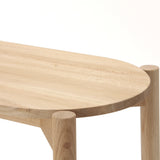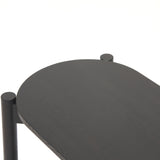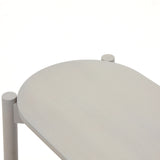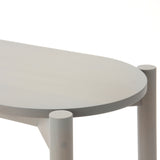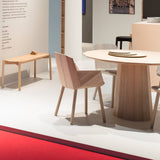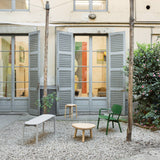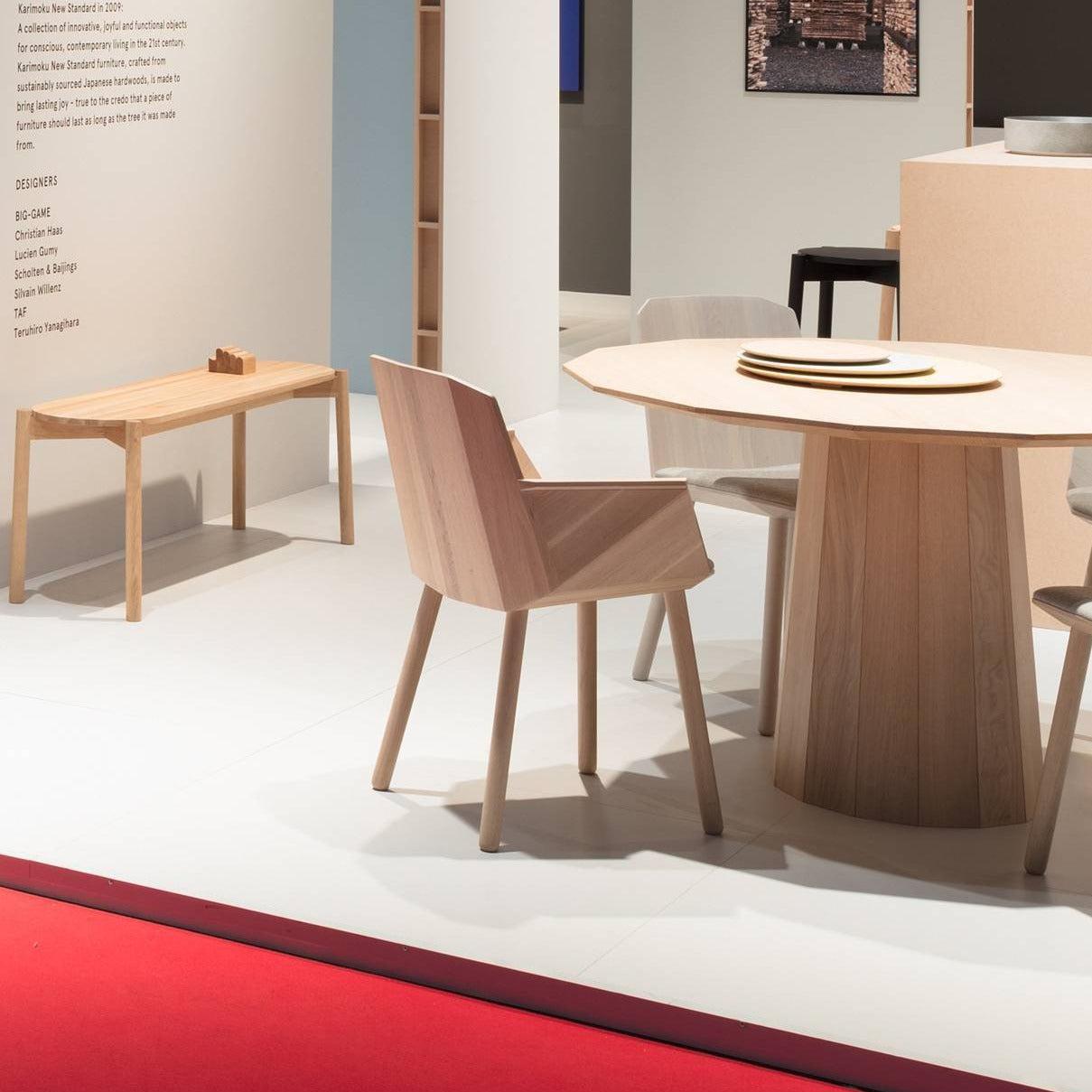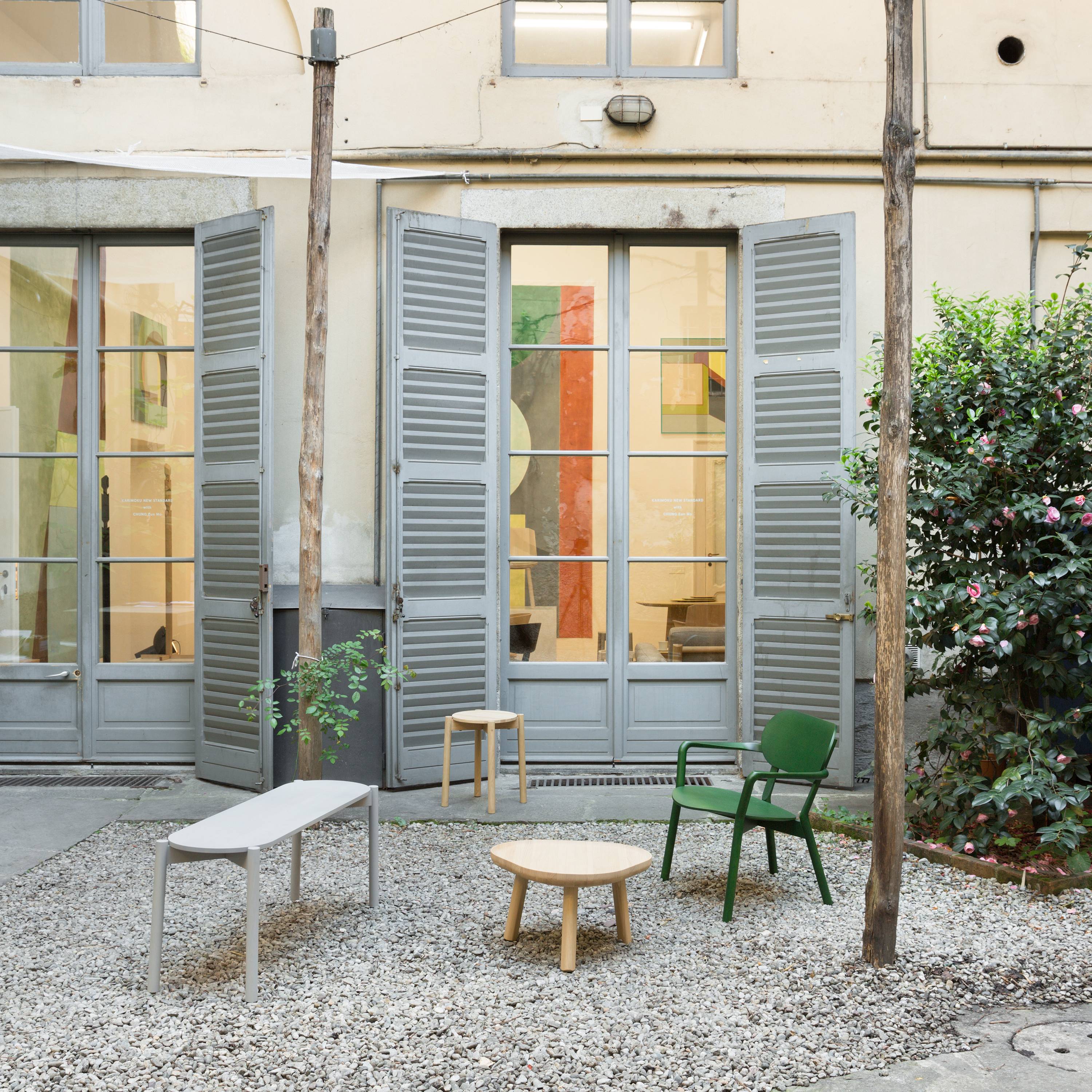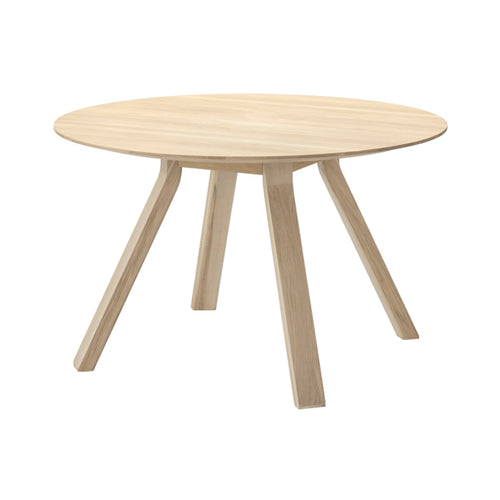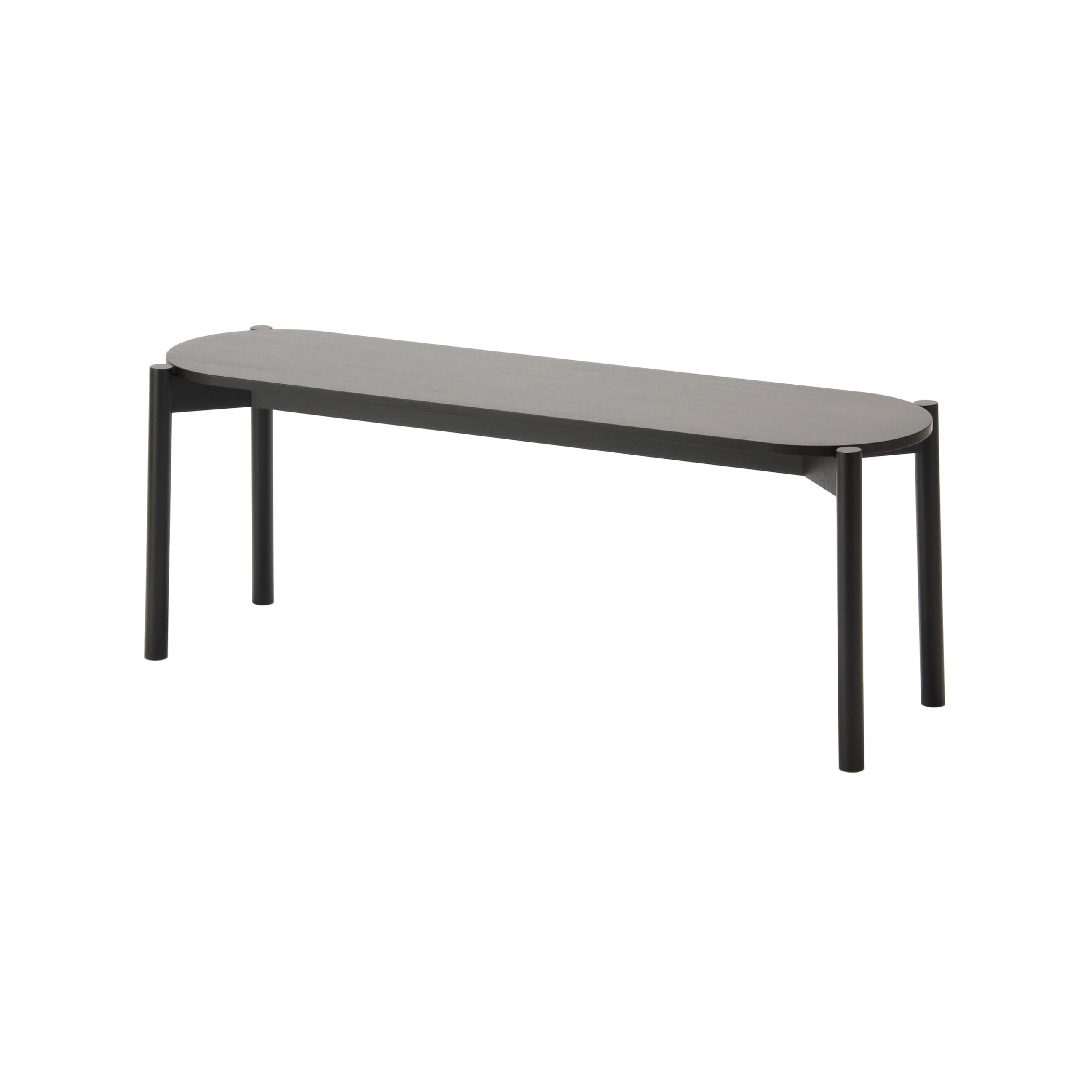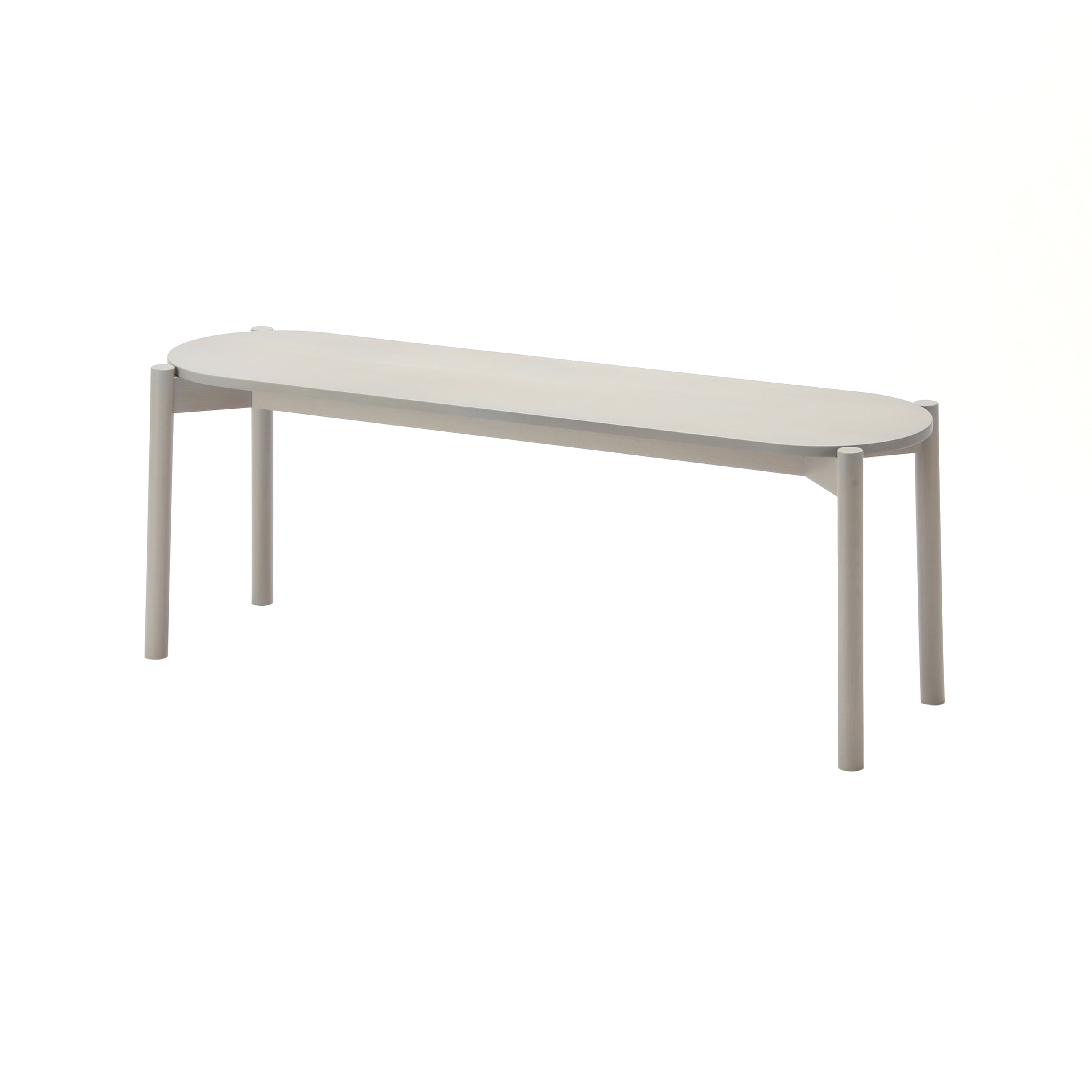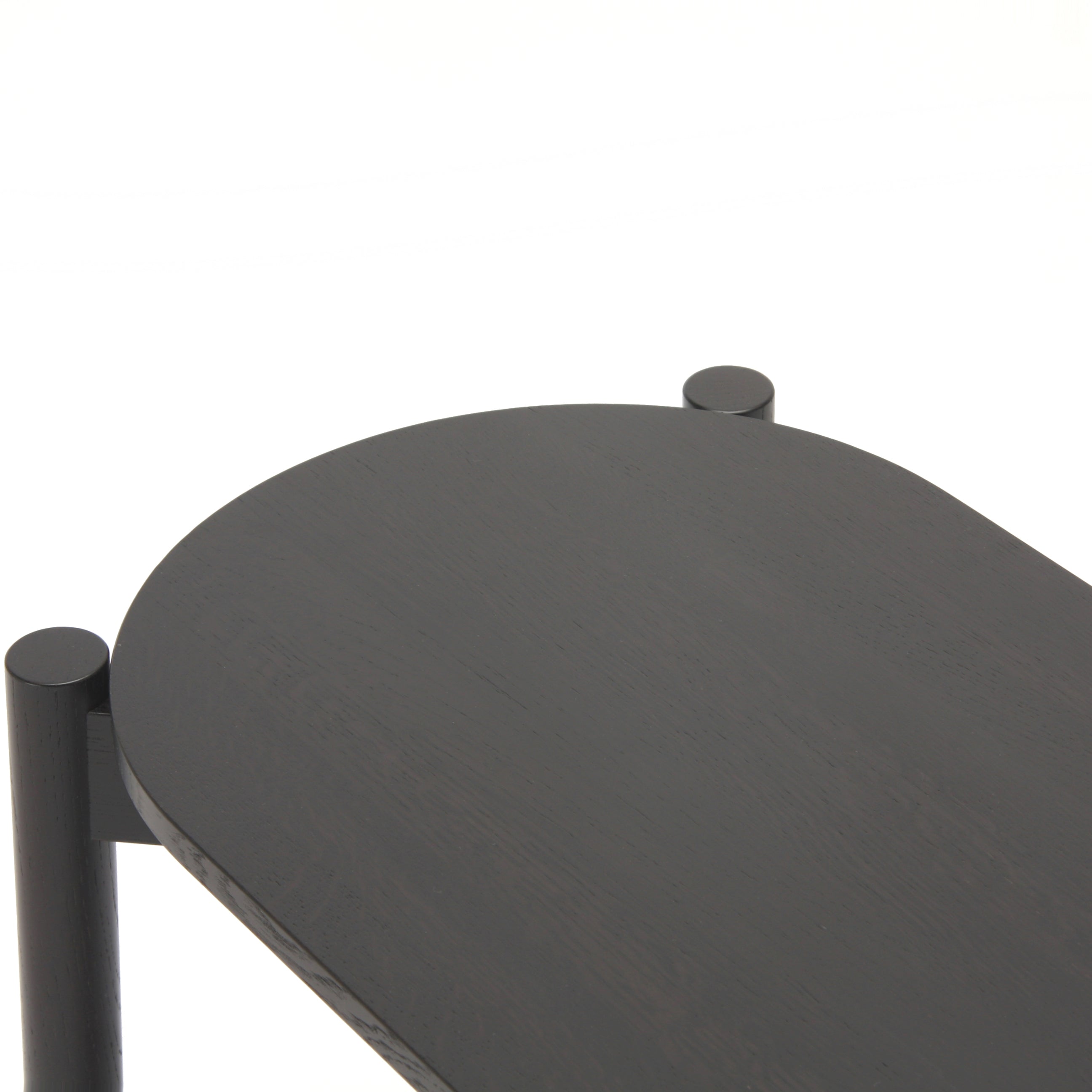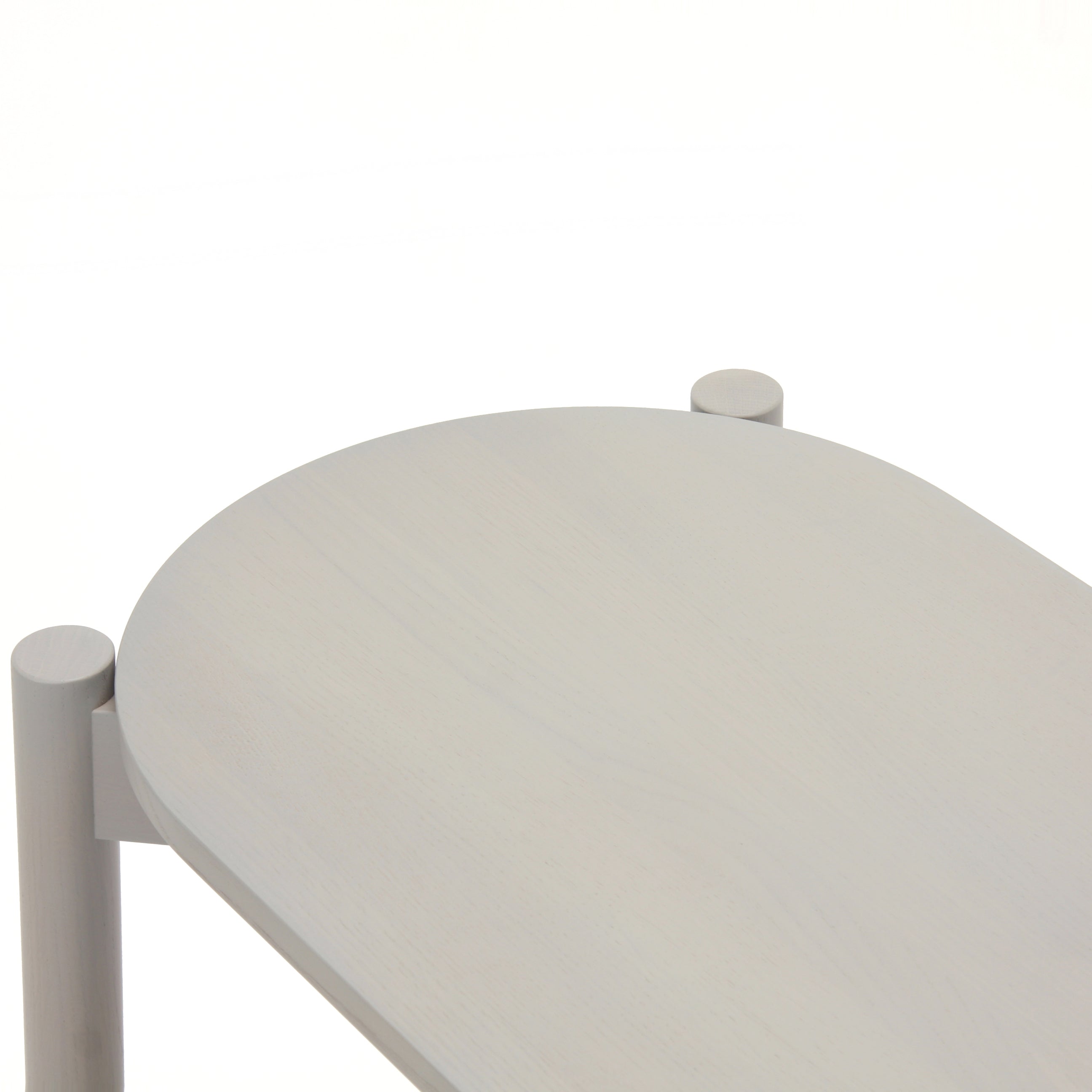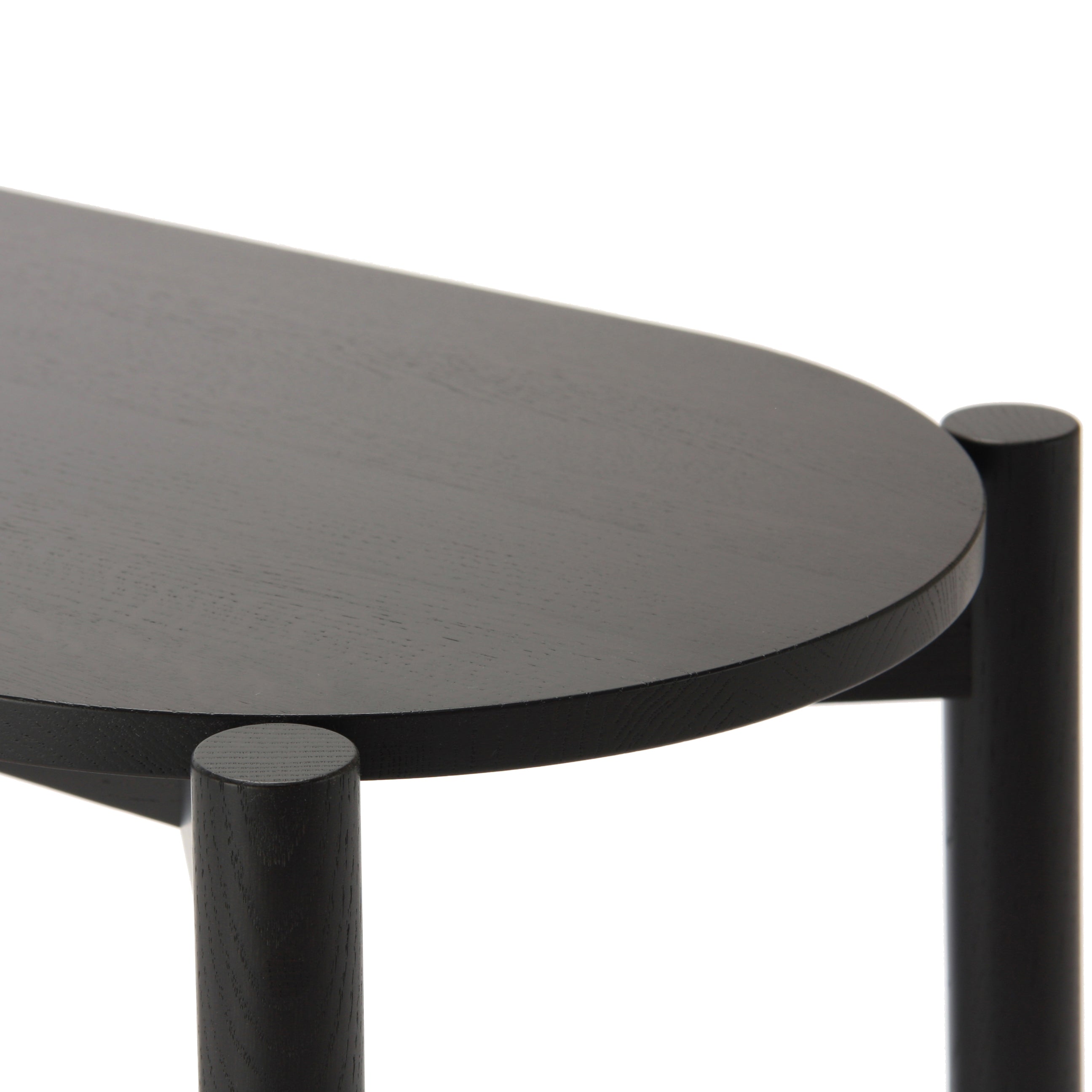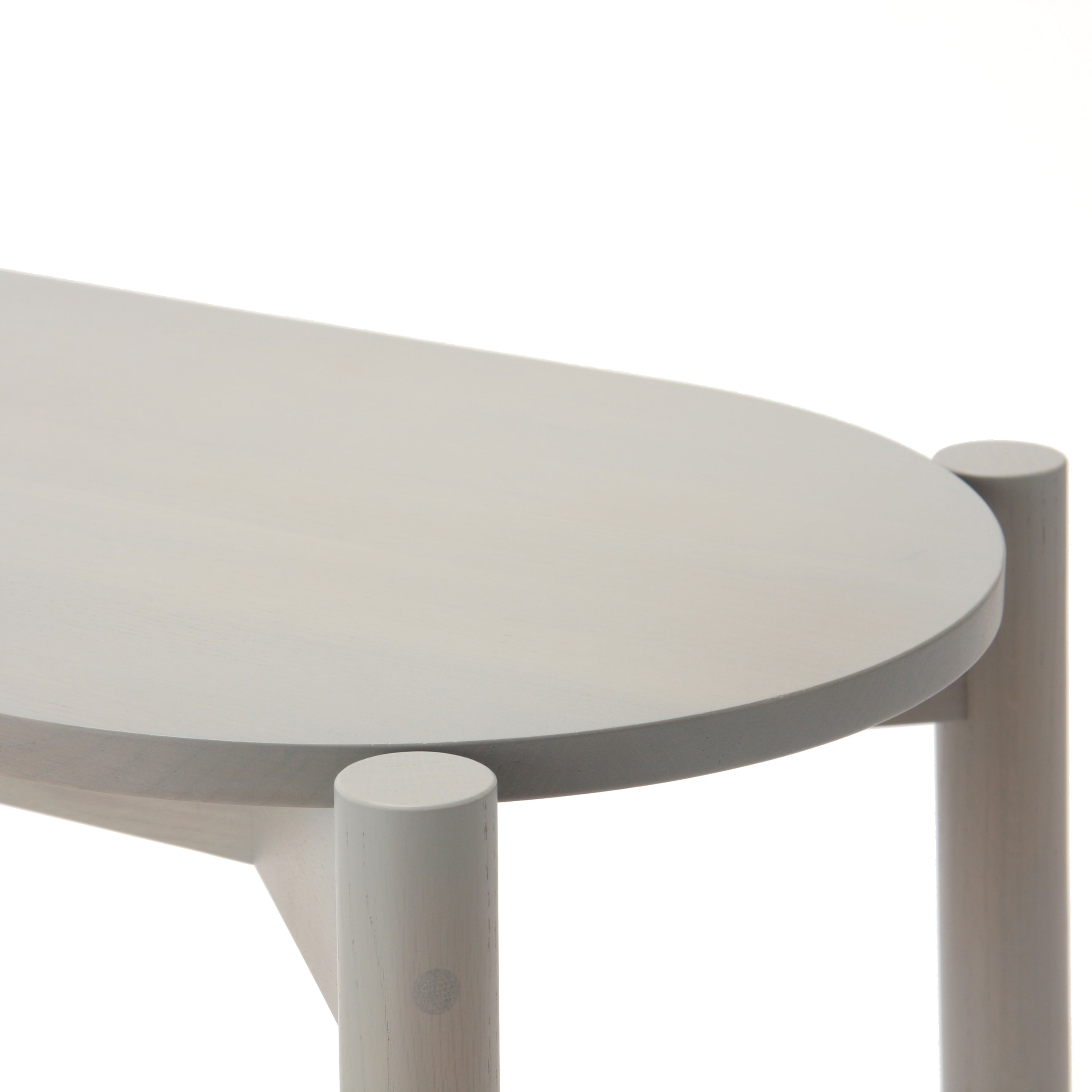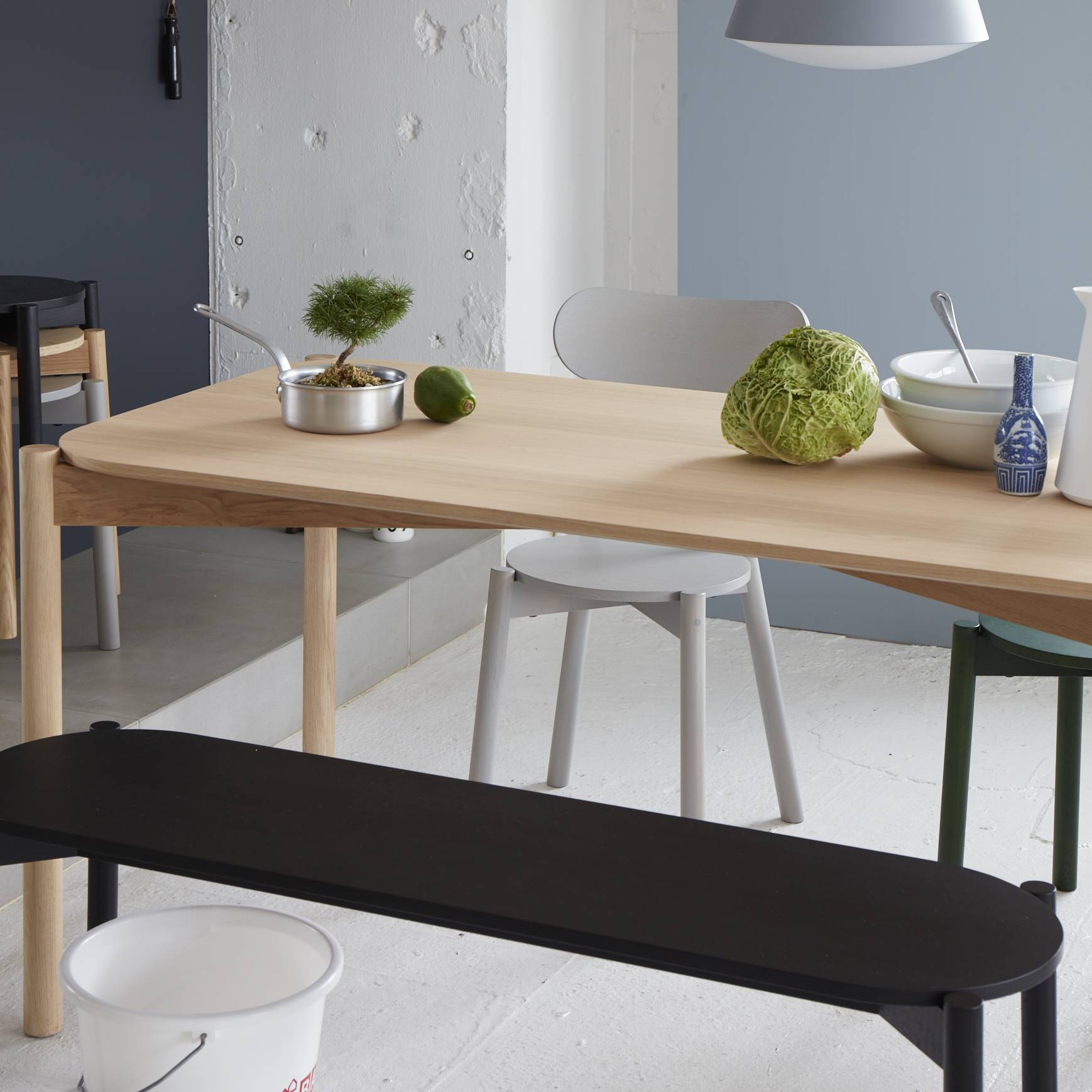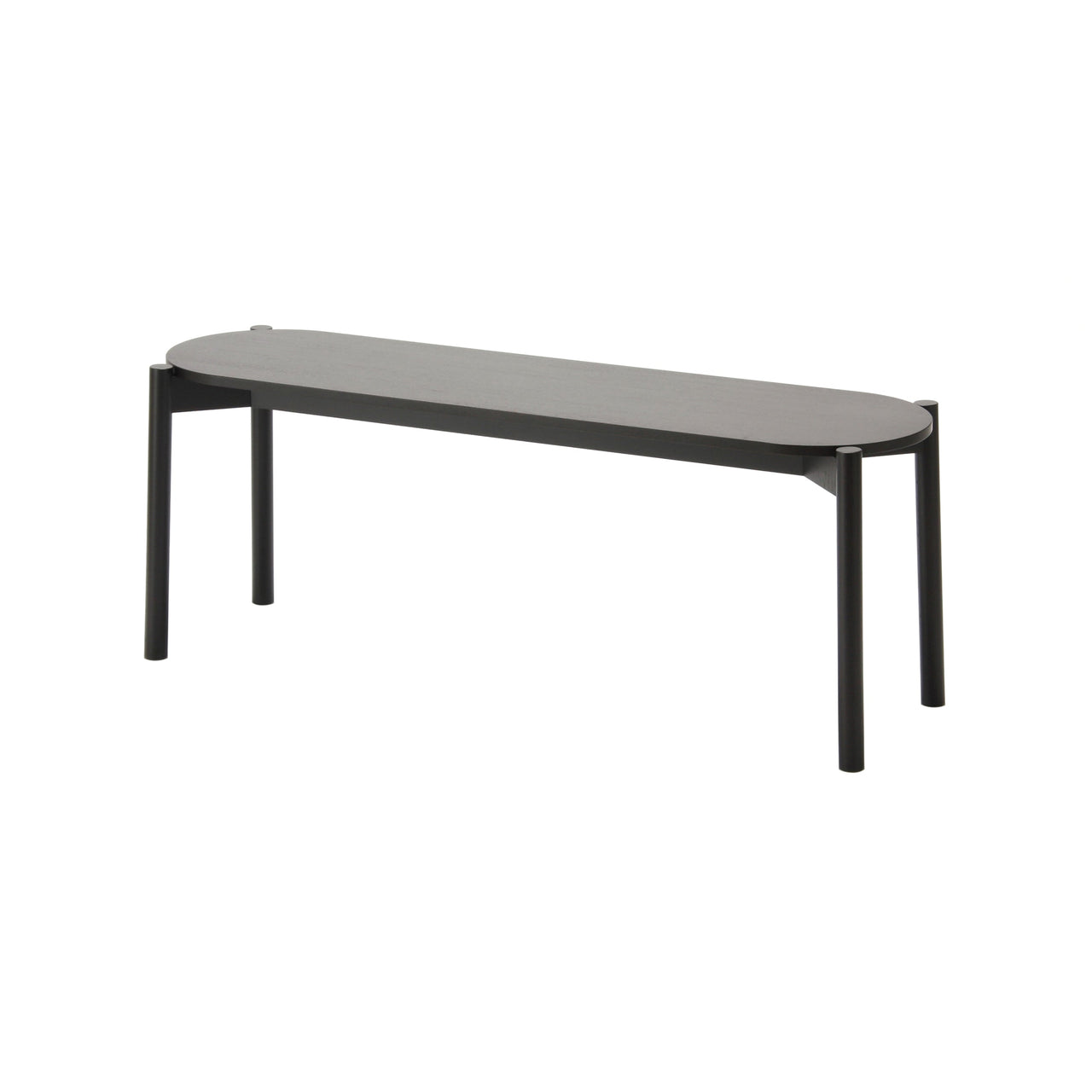
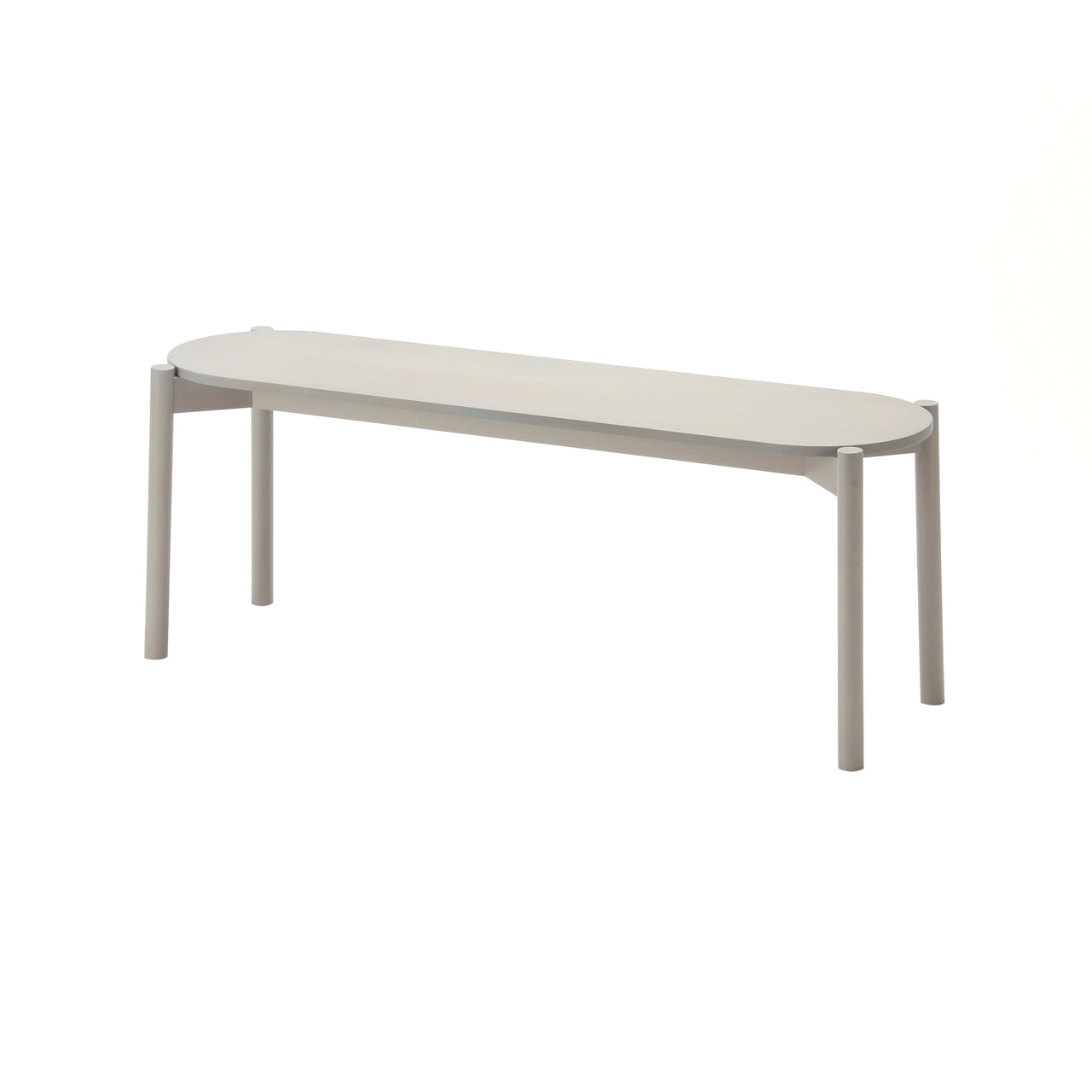
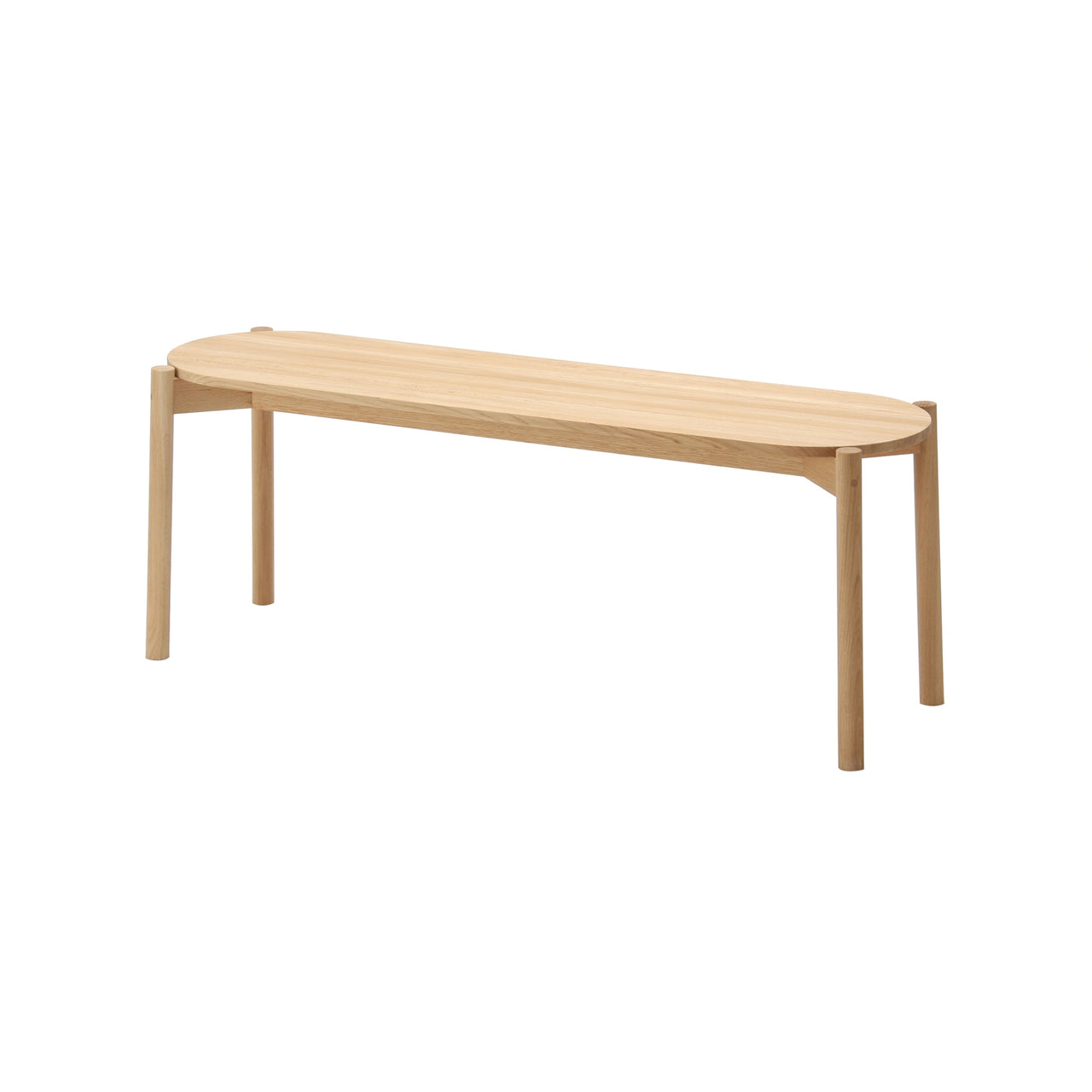
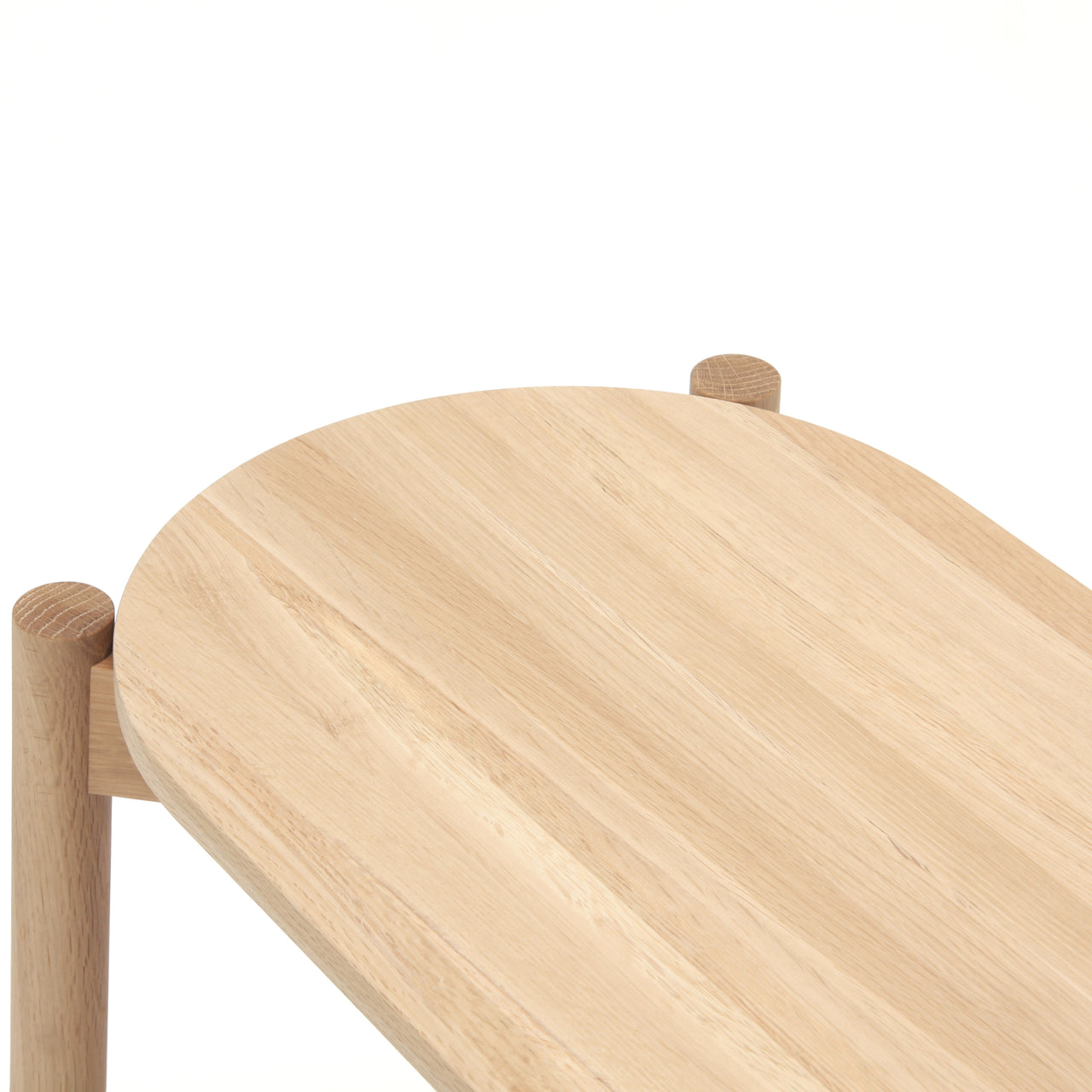
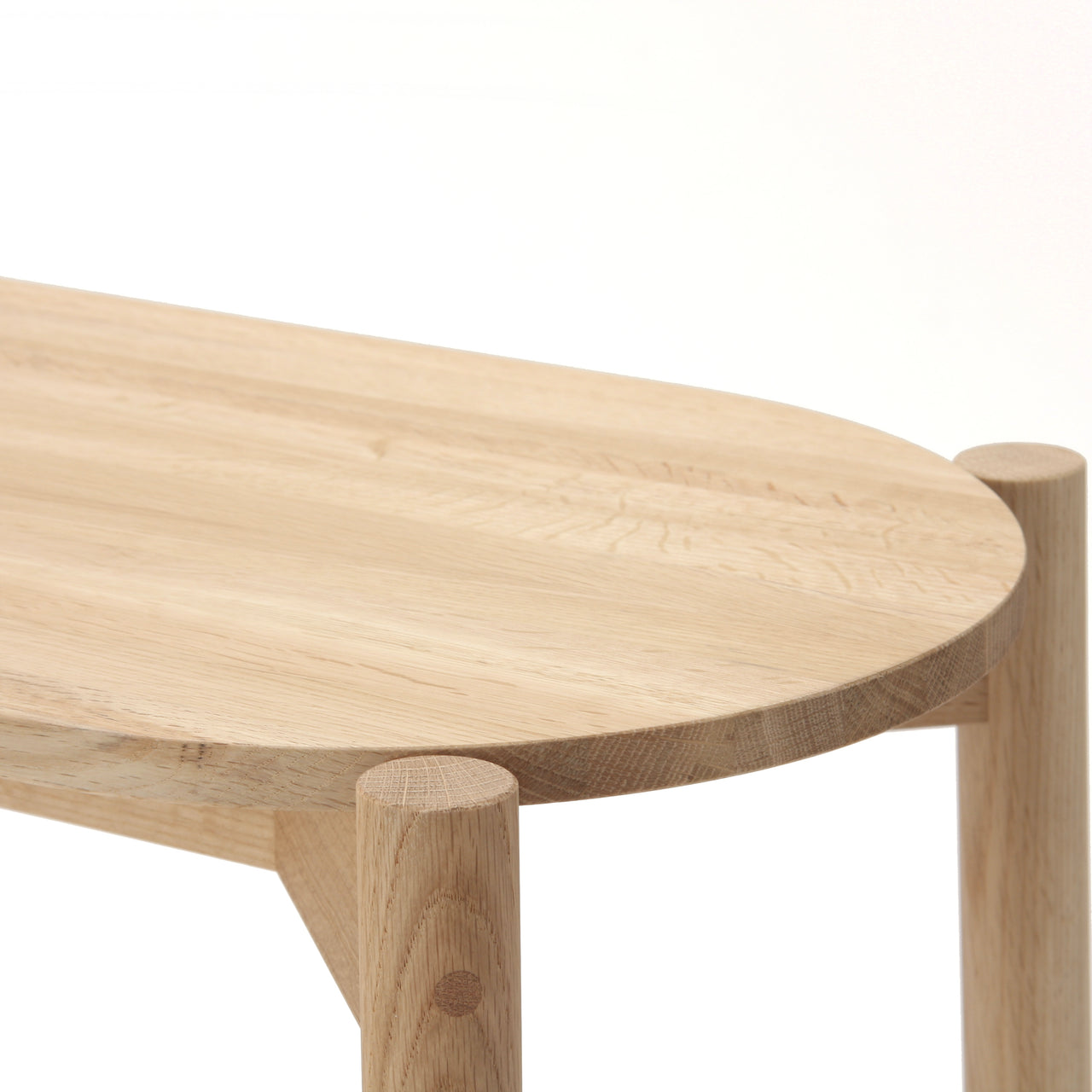
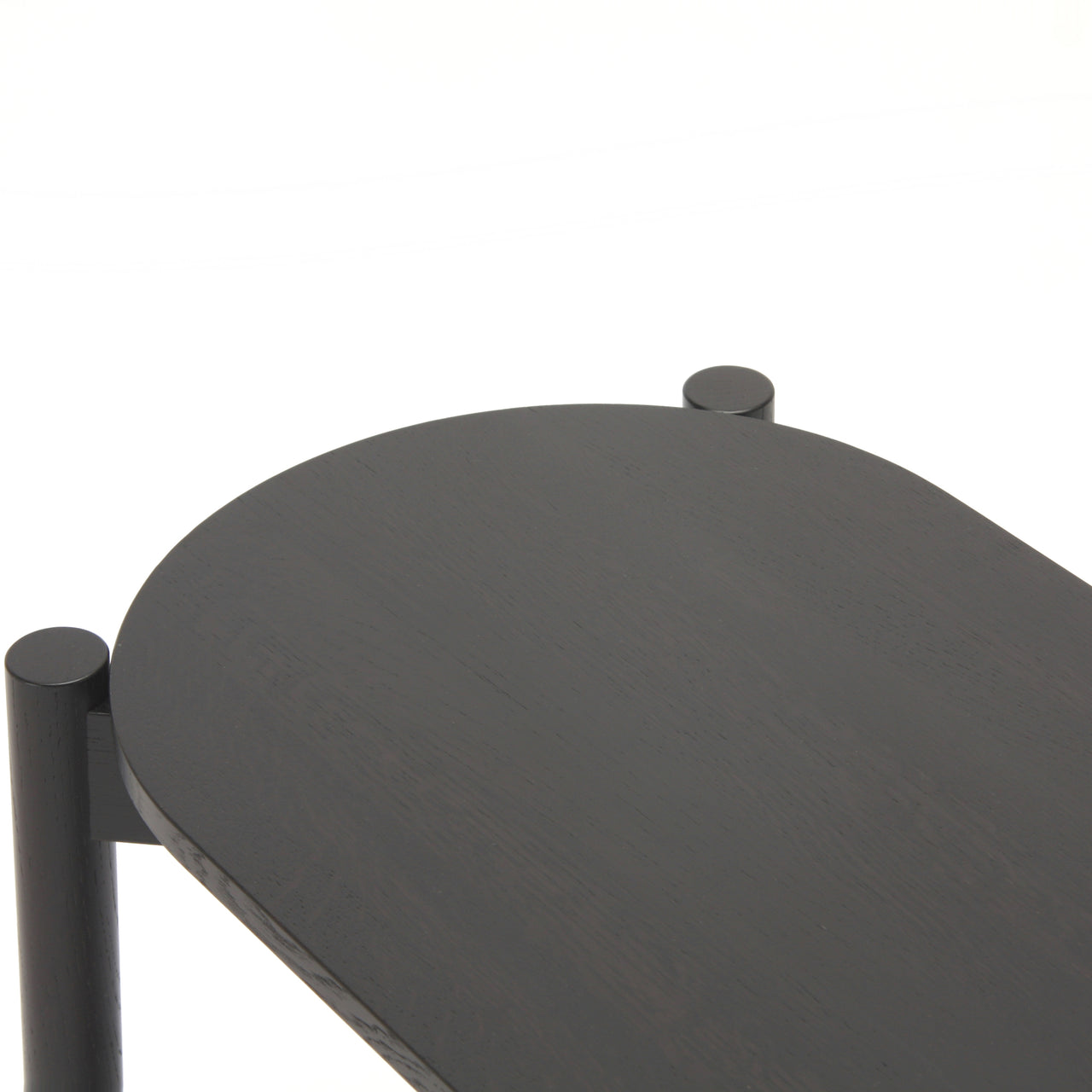
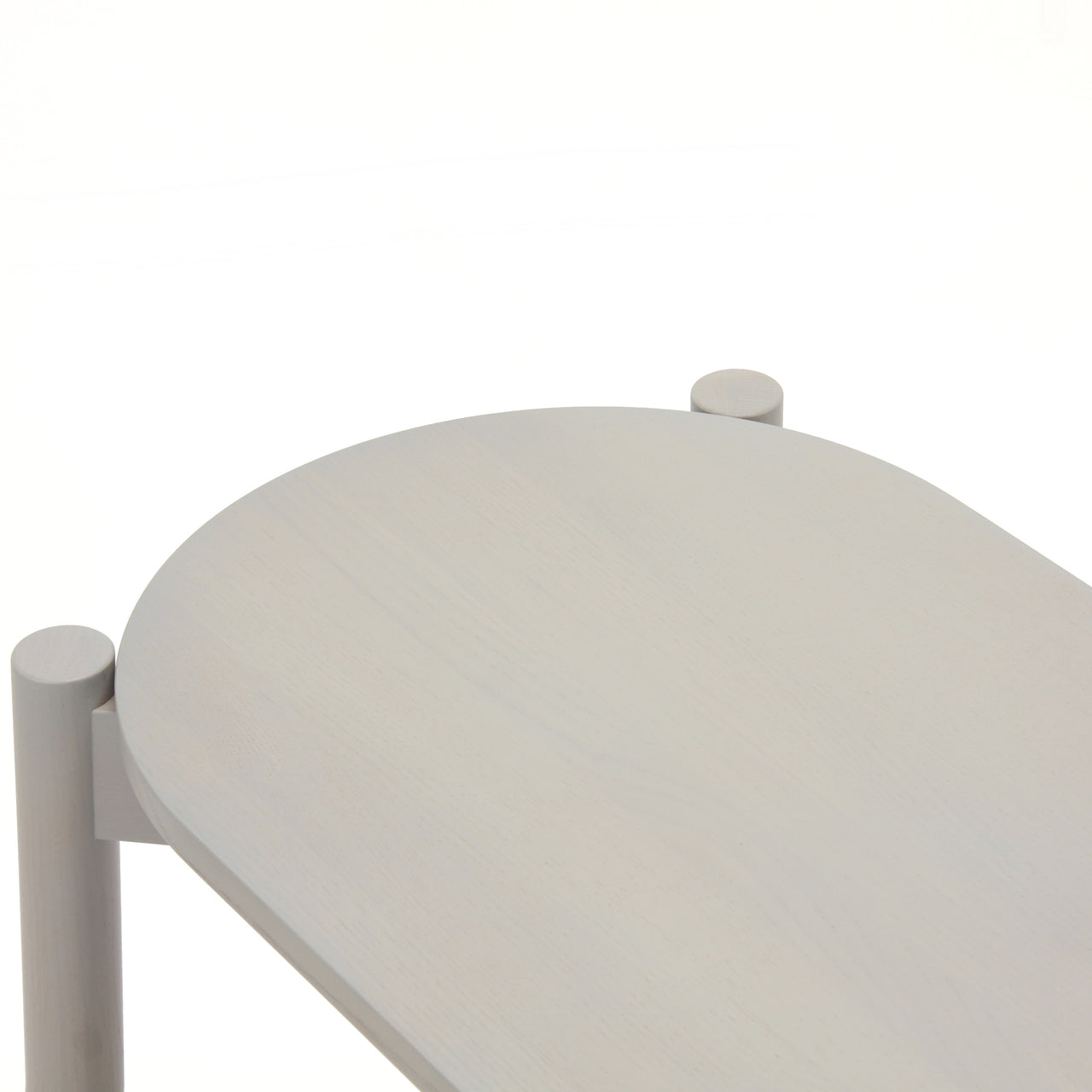
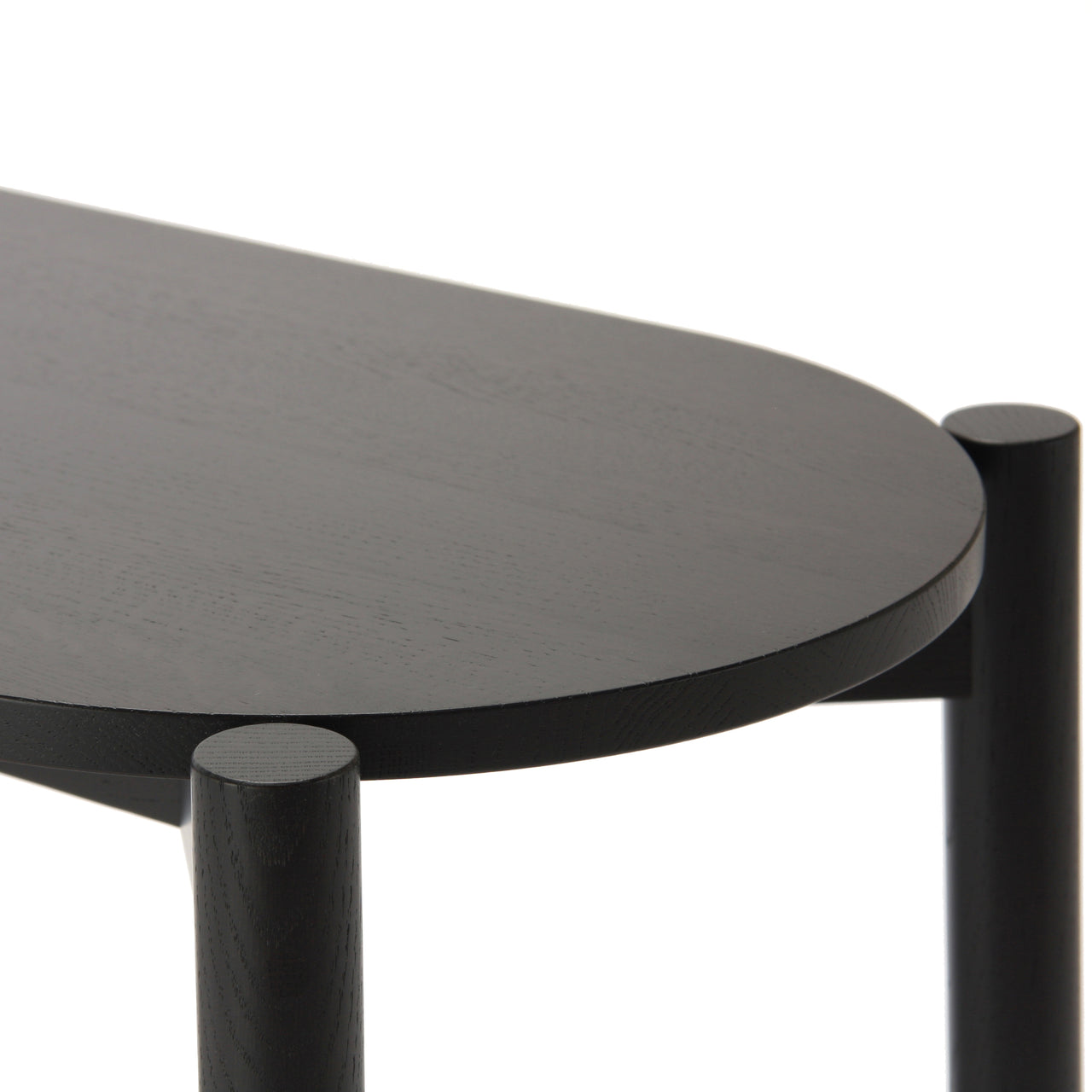
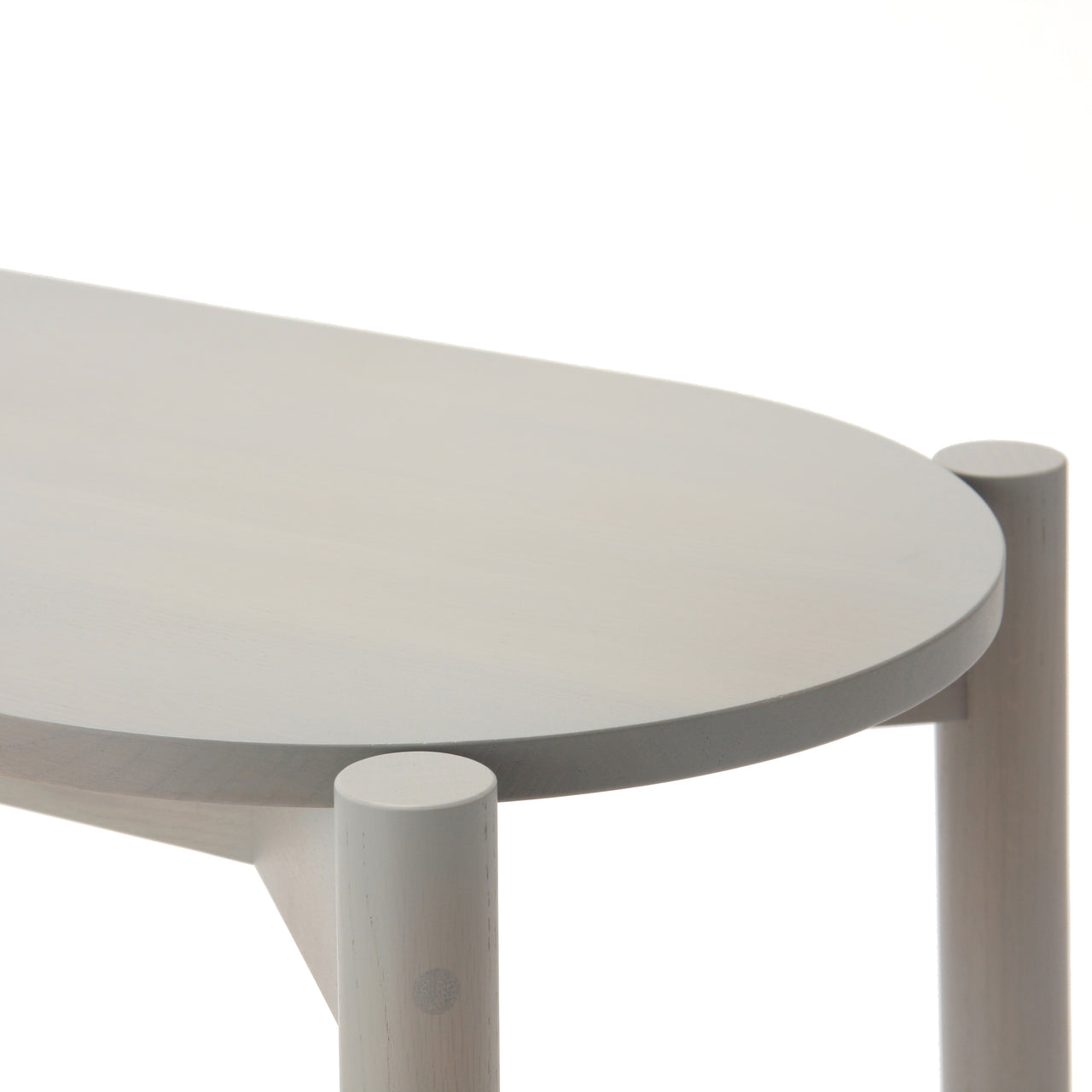
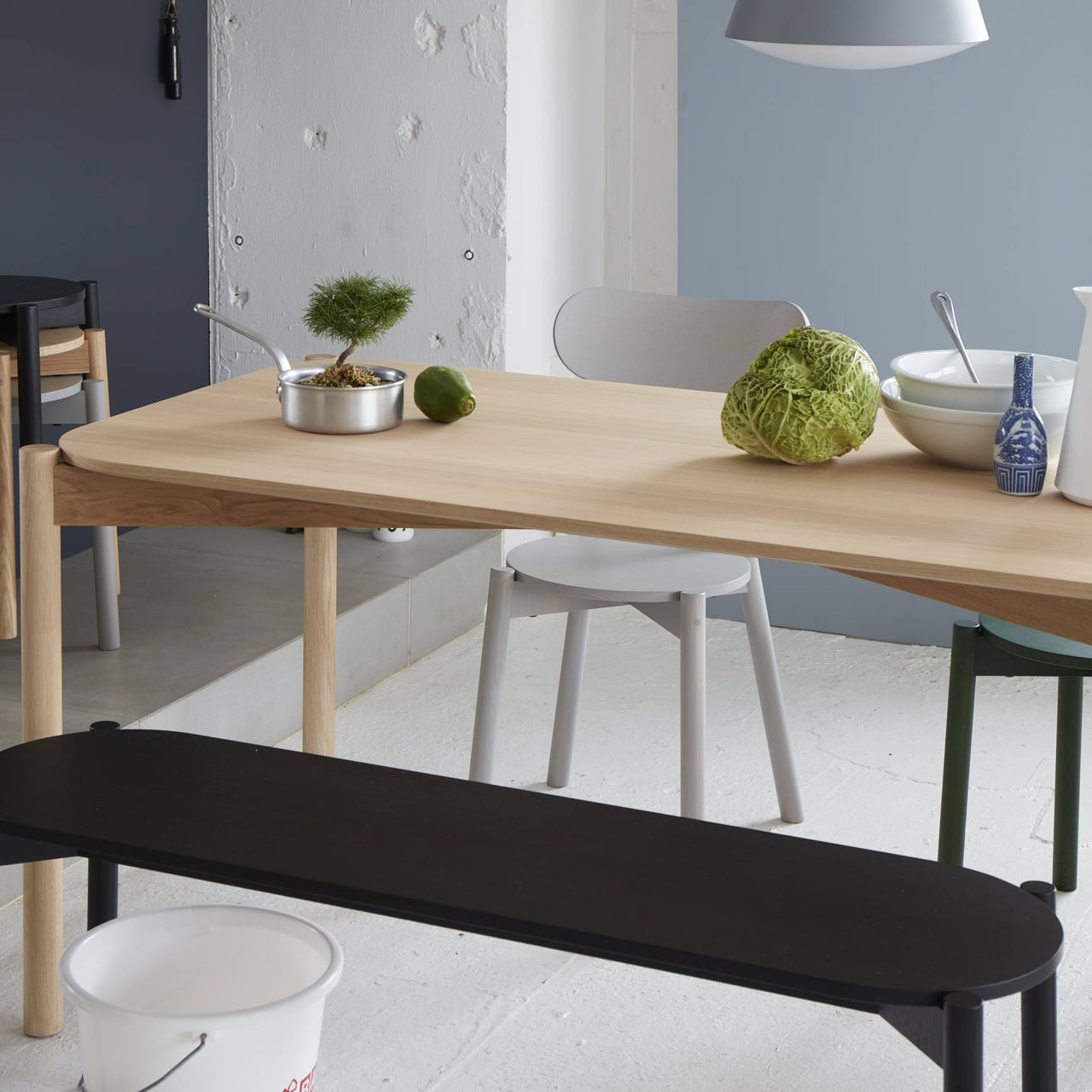
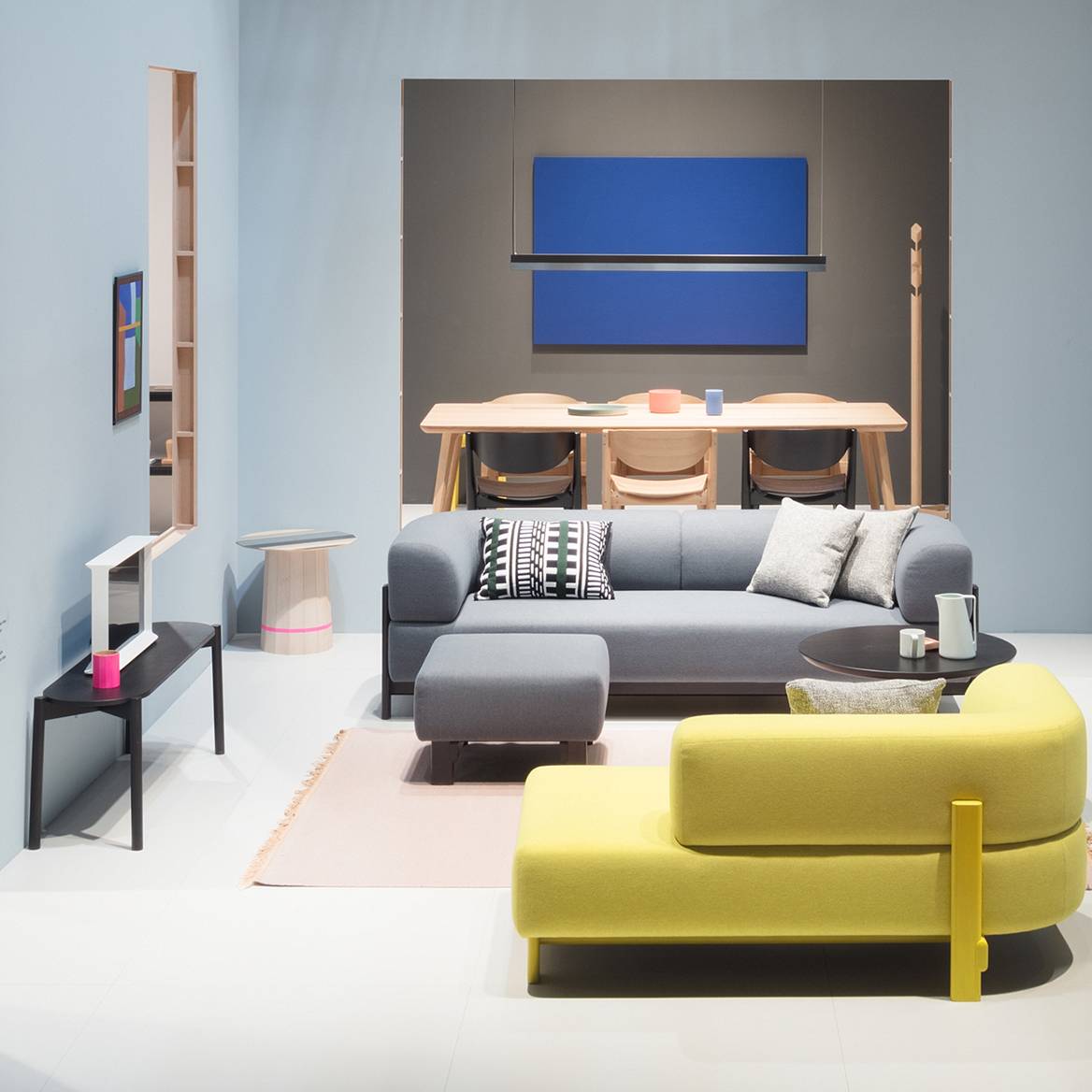
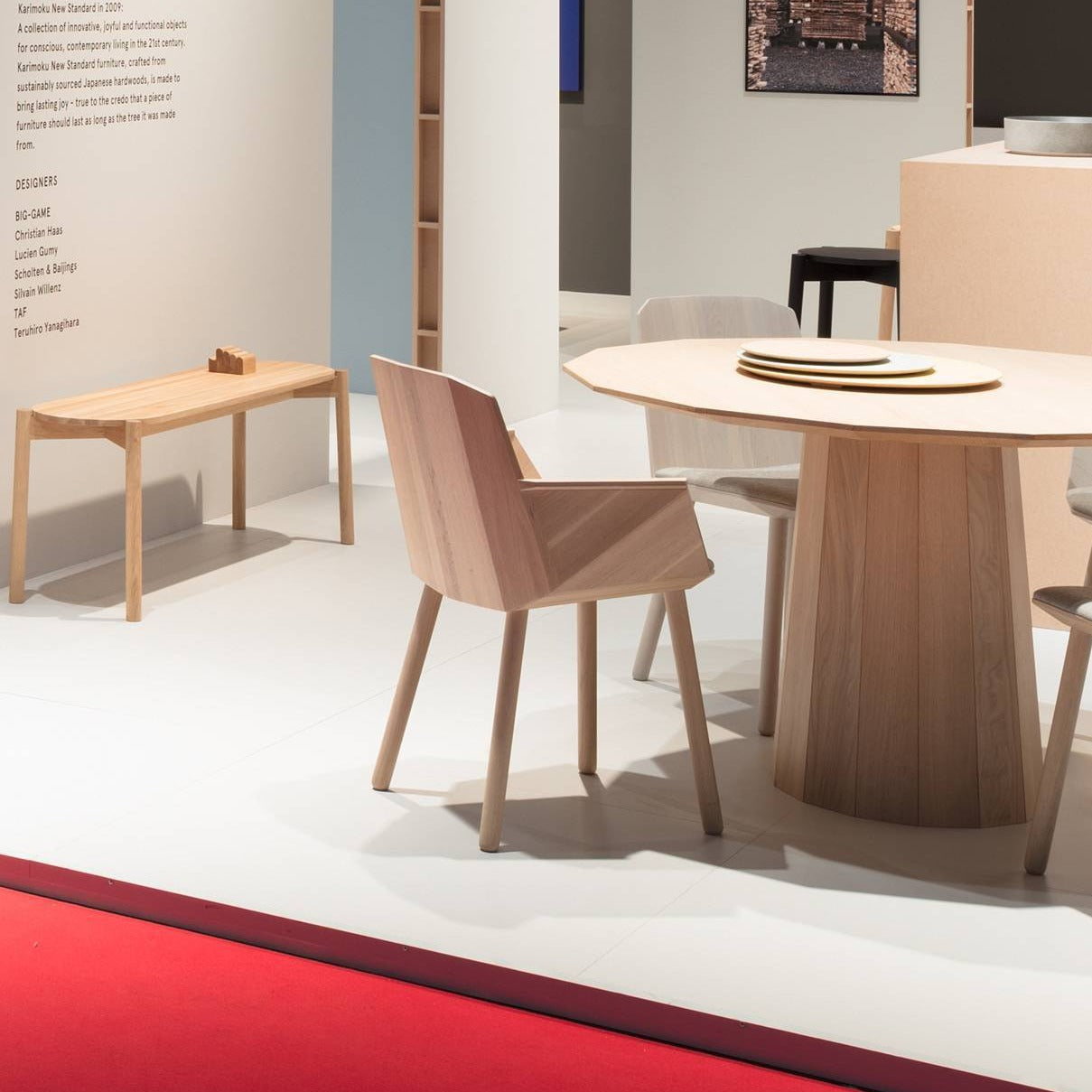
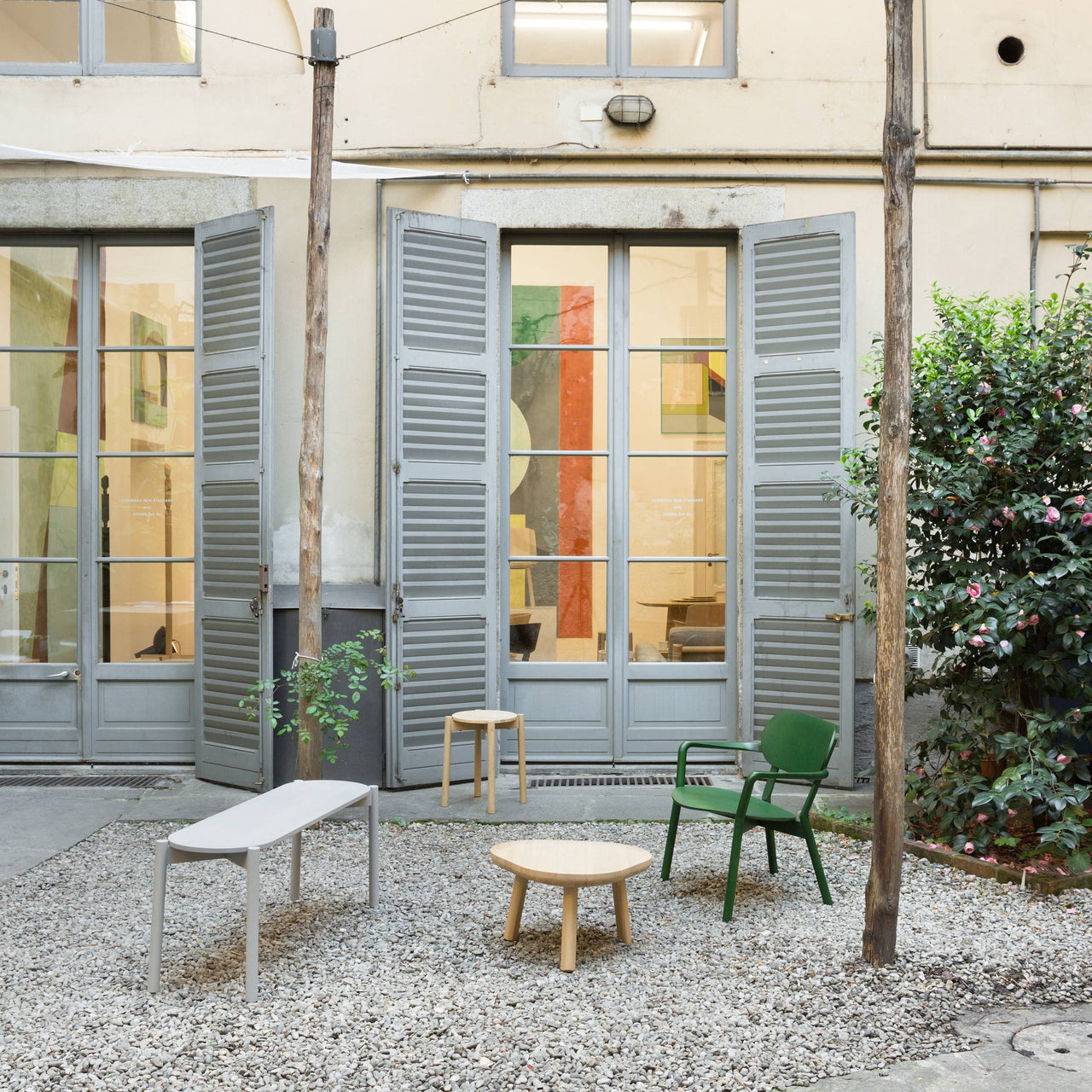
Karimoku New Standard × Big-Game
Castor Dining Bench
$820
$820
SKU: KNS-C349WAME
$820
SKU: KNS-C349WAMC
$820
SKU: KNS-C349WAMB
Description
Getting benched gets a happier connotation here. The Castor Bench from Japanese heritage brand Karimoku New Standard shares the characteristic details of the series, adapted for a handsome versatility. Inspired by a traditional Nipponese "endai" (a 4-legged wooden outdoor bench), the surface appears to be made of individual laths, but in fact is a solid board made of multiple strips of Japanese oak. Relying on time-honored techniques, this achieves a large surface with great strength. Attractive on its own anywhere extra seating is needed, it can also be combined to extend the companion unit, Castor Shelf. By Swiss design firm Big-Game, a prime collaborator in Karimoku's newly-minted quest to engage exciting new international talent as well as to promote responsible craftsmanship with efforts to preserve and revitalize Japanese hardwood forests at home.
Specifications
Size
- 17.7" h x 47.2" w x 14" d (45x120x35.5cm)
Material
Oak
Brand
Karimoku New Standard
It has always been about the wood. Shohei Kato opened a small woodworking shop in 1940 from a longstanding timber firm he acquired in Kariya. The first letters of the town name combined with “moku,” as in “mokuzai” ( “wood”) provided the brand name. Furniture followed within 2 decades, along with several brands under the Karimoku umbrella. Then in 2009, with his grandson Hiroshi Kato as vice president, the Karimoku New Standard branch launched to develop works with international designers in the modern design arena.
The star roster includes Swedish studio TAF, the Swiss team Big-Game and Dutch duo Scholten & Baijings. Among them is David Glaettli, who also serves as KNS brand creative director and dubbed its credo as “high-tech and high-touch.” The highly skilled Japanese carpentry and hand-applied painting that are a part of the parent company heritage are integral to KNS. It also looks forward, revitalizing native forests by targeting undervalued, sustainably grown hardwoods. Advanced technologies have elevated the low-diameter chestnut, maple and oak trees, once turned into wood chips for paper pulp, into something of lasting beauty. The aim, notes Hiroshi, is “furniture that will be used and loved for more than 100 years.”




